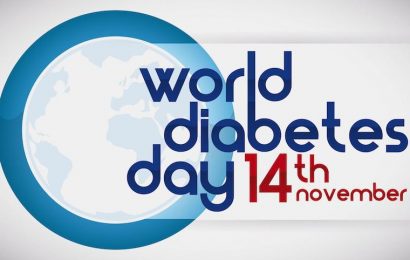As we’ve discussed in the past here at Diabetes Flashpoints, the United States is, by many measures, the unhealthiest country in the developed world. Some, but certainly not all, of the blame for America’s higher rate of health problems can be attributed to the high rate of obesity in the United States: 33% of Americans are obese, compared with 27% of Britons and Australians, 22% of Belgians and Norwegians, and 18% of Danes and Swiss (and only 5% of Japanese). As we noted in a piece a few years back called “Southern Girth,” obesity is not uniformly distributed across the United States. Now, a new survey sheds light on some behavioral differences among the states that may help explain differences in outcomes.
Released earlier this month, the survey by Gallup revealed that overall, Americans exercised less in 2013 than they had in 2012, perhaps due to that year’s colder, wetter weather. Vermont was ranked highest in the category of exercise, with 65.3% of adults reporting exercising for at least 30 minutes three or more times a week. Hawaii (62.2%), Montana (60.1%), Alaska (60.1%), and Colorado (59.8%) rounded out the top five, while Delaware (46.5%), West Virginia (47.1%), Alabama (47.5%), New Jersey (47.7%), and Rhode Island (48.2%) had the lowest numbers of adults who exercised. Vermont and Alaska have traded the top spot in recent years’ surveys, while four states — Indiana, Ohio, New Jersey, and Alabama — consistently rank in the bottom 10 every year.
Vermont also received the top ranking in produce consumption, with 67.8% of adults reporting consuming at least five servings of vegetables four or more days a week. Montana (63.0%), Washington (61.8%), Oregon (61.4%), and New Mexico (61.1%) rounded out the top five, while the bottom five states were Oklahoma (52.3%), Louisiana (53.3%), Missouri (53.8%), Delaware (54.3%), and West Virginia (54.5%). Vermont, Oregon, and Maine consistently score in the top 10 each year, while Oklahoma, Louisiana, Arkansas, Iowa, and Texas usually score in the bottom 10.
The results of this survey make for an interesting comparison with those of another survey from Gallup released earlier this month, showing the rate of obesity in each state. Several of the states that scored poorly on exercise and vegetable consumption also scored in the top five for their obesity rate, namely West Virginia (34.4%), Delaware (34.3%), and Louisiana (32.7%). The state with the most obesity was Mississippi (35.4%), while the national rate of obesity was 27.1% (up from 26.2% in 2012). Similarly, states that scored well on exercise and vegetable consumption also tended to have lower obesity rates, such as Montana (the lowest obesity rate at 19.6%) and Colorado (20.4%). But Alaska, one of the top states for exercise, had a higher-than-average obesity rate of 30.1%, while the obesity rates of New Jersey (24.9%) and Rhode Island (24.8%) are below the national average despite their bottom-five rankings for exercise.
Another factor that somewhat correlates with exercise, produce consumption, and obesity rates is poverty. As an overview of poverty rates by state shows, those with the highest levels of poverty are mostly clustered in the South, where obesity rates are higher and exercise rates are lower than the US average. Similarly, states with high exercise and low obesity rates tend to also have lower poverty rates. In theory, poverty may explain why many people to choose unhealthy high-calorie-density foods, since these foods are typically the least expensive choices on a per-calorie basis. But poverty cannot be the only explanation for dietary choices, since adults in Vermont consume more produce than those in neighboring New Hampshire, which has the lowest poverty rate in the Unites States (Vermont has the 10th-lowest poverty rate). And given that it has the 12th-lowest poverty rate in the United States, one would expect Delaware to score better than its 4th-worst ranking for vegetable consumption.
Are you surprised by your state’s ranking in the areas of exercise, produce consumption, and obesity? What cultural, geographic, or other factors do you think might explain your state’s ranking? Should states with low exercise and high obesity rates undertake campaigns to promote lifestyle changes? Have you seen any positive or negative trends in these areas in your state? Leave a comment below!




